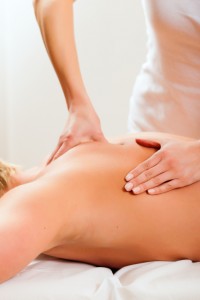This is a FACT.
Poor circulation is more problematic than just cold hands and feet. If you suffer from restricted blood flow, you may be faced with heart and kidney problems, high blood pressure, varicose veins, and organ damage in the long term. Fortunately, there’s a very pleasurable way to get your circulation pumping. Massage therapy has been praised for alleviating muscle soreness and boosting blood flow, and it’s becoming ever more popular as a complement to traditional medical treatments. No longer just hearsay, the ability of massage to improve circulation is now validated by a brand new study!
 Splurge on Massage Therapy
Splurge on Massage Therapy
The Archives of Physical Medicine and Rehabilitation reports that massage therapy not only soothed muscle soreness and boosted vascular function after exercise, but also improved vascular function in people who didn’t exercise. Cliff Notes: regardless of your activity level, a massage can alleviate tension (both physical and mental) and stimulate blood flow.
Researchers asked healthy sedentary adults to exercise their legs to the point of soreness using a standard leg press machine. After exercising, half of the group enjoyed leg massages that implemented Swedish massage techniques. Researchers then asked exercisers to rate muscle soreness on a scale of 1 to 10. Both the exercisers who received massages and those who did not reported soreness immediately after exercise, however, those who received massage therapy experienced no continued soreness 90 minutes after treatment. The exercise-only group reported soreness 24 hours after exercise.
The feel-good effects of massage are just one component. Researchers measured brachial artery flow mediated dilation (FMD)—a standard metric of vascular function—in the upper arm at 90 minutes, and again at 24, 48, and 72 hours after exercise. Exercisers not given a massage post-exercise showed decreased blood flow at 90 minutes, and again at 24 and 48 hours, with blood flow returning to normal levels 72 hours after exercise. Exercisers who received a massage exhibited improved blood flow at each of the check-in times!
Another group of massage-only healthy adults showed nearly identical levels of improved blood flow to those of the exercise-massage group, which suggests that massage is beneficial to your circulatory system whether you exercise or not. Because the effect lasted several days after massage therapy, researchers also believe that massage ensures a protective benefit on vascular function.
Nina Cherie Franklin, UIC postdoctoral fellow in physical therapy and first author of the study explains, “Our study validates the value of massage in exercise and injury, which has been previously recognized but based on minimal data. It also suggests the value of massage outside of the context of exercise.”
There’s no two ways about it: if you suffer from limited mobility or impaired vascular function, regular massage sessions can make a world of difference. And if your circulation appears to be pumping at robust levels, regular massages can still impart a protective benefit…not to mention you deserve to be pampered!




